Page 1 of 1
Diesel engine rear seal
Posted: Tue Feb 10, 2009 4:25 pm
by George ( C&C 40 )
Hi All,
While traveling the ICW up from Charleston, SC for a few days I noticed some oil drips under the engine. They only seem to appear if the engine is run for several hours ( or days ) in a row. I've put scraps of paper towels all over the engine where oil might leak and the oil is coming out of the bottom of the flywheel bell housing on the back of the engine ( but before the transmission ) Online research indicates that this is a rear oil seal leak. It's a small amount of oil and I have not seen it since I returned from that trip. In fact there might not be anything wrong at all and this is just how these things work ( i.e. hot engine, spinning shaft under load, and 12 hours a day run time allows a little oil to seep by ). I could just ignore it, but if it's something that's likely to get worse I will have some time later this spring to fix it if necessary.
Has anybody on the forum ever replaced a rear oil seal ( sometimes called a main engine seal )? -- It appears that all I have to do is undo the engine prop shaft coupling, lift the engine off its mounts and move it into the main cabin for additional work space, pull the Hurth transmission off, pull the bell housing off, pull the old oil seal, press in the new seal, and then reverse the engine mounting process.
Any advice form anyone who has ever been through this would be great!
Thanks in advance,
George Jones
C&C 40 "Delphinus"
Posted: Tue Feb 10, 2009 4:37 pm
by David
My only advice or thought really is that you might want to change your front seal at the same time, and perhaps the seals for the transmission as well.
Good luck with it,
David
Posted: Tue Feb 10, 2009 5:15 pm
by Ceasar Choppy
Let me guess: do you have a Westerleake 4-107 or a Perkins 4-108?
Replacing the seals on these engines will give you 6 months of joy and then you will tear your hair out again. The oil seals on these engines are basically two pieces of rope which is how they all used to be back in the day... or so I've been told by my friend who restores Model A Fords.
Posted: Tue Feb 10, 2009 5:33 pm
by David
Model A? Shoot, the Ford Cleveland 351 used rope for its front and rear seals as long as the engine was made and boy could they leak!
Posted: Tue Feb 10, 2009 5:44 pm
by George ( C&C 40 )
Hi Guys,
The engine is a 1979 Yanmar 3QM30(H) with post factory fresh water cooling. It is, in my opinion, one of the great marine engines made -- large, heavy, cast iron block, great torque, smooth running, quiet, and has provided flawless operation for 30 years.
Here's a couple pictures of the back of the engine / transmission / coupling area


George Jones
C&C 40 "Delphinus"
Posted: Tue Feb 10, 2009 6:42 pm
by Ronin120
George,
I've got the original 1982 3HM (also converted to factory heat exchanger) with the Yanmar transmission. My main seal started to leak a bit about a year ago. I don't have any ideas about fixing it one way or the other but I did ask my mechanic about the effort (read: expense) involved in replacing it. He advised to just keep replacing the old-absorb until it became really bad.
Not a terribly encouraging thought as far as I'm concerned but I'm going to go with that until it's time to replace the motor or oil floods the bilge...
Best
Posted: Tue Feb 10, 2009 7:00 pm
by bcooke
Keeping a fresh oil absorbent pad underneath sounds good to me.
The best advice I can give is to get a maintenance manual. Rear main seals come in many varieties. Some are dead simple to replace. Some are less simple. Some you will fix once and never more. Others you will change every six months.
For the amount of oil coming out I think the absorbent pad is okay. Keep an eye on it. In my experience, these seals don't suddenly let go. They slowly get worse over time. Lots of time.
Posted: Tue Feb 10, 2009 10:32 pm
by earlylight
I would keep a VERY close eye on the oil leakage. My Westerbeke 27 (mitsubishi block with 1200 hrs on it) blew the rear main seala couple years ago. It was fine one minute and 15 min later I had 3 quarts of oil in the bilge. Not a pretty sight. Had to pull engine into cabin, remove bell housing, transmission, damper plate etc. Replaced motor mounts while I was at it. Good luck!!
I'm doing mine as we speak..
Posted: Tue Feb 10, 2009 11:45 pm
by Maine Sail
I'm doing mine as we speak. The job is not to difficult. Each engine has a different type of seal and some are easier to remove from the block and some others more difficult but still not very hard. The hardest part will be getting your tranny off with that shaft in the way.
My Westerbeke/Mitsubishi is an easy one:
Support the engine:
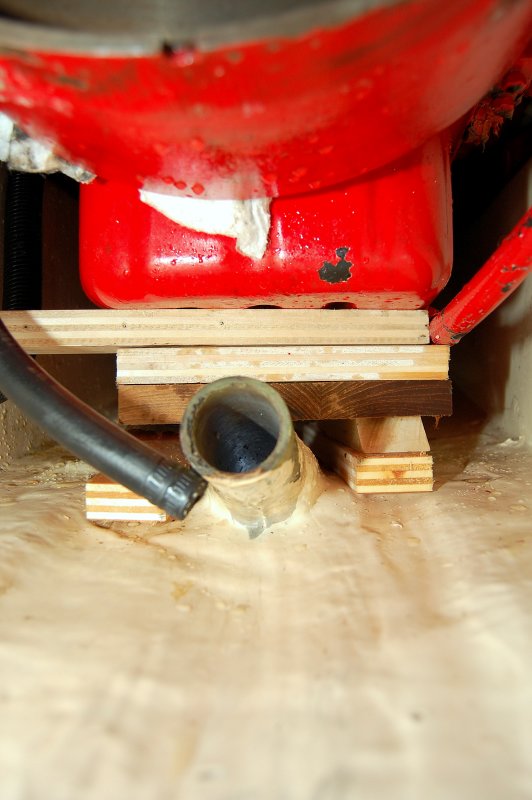
Remove Damper Plate (use impact wrench!):
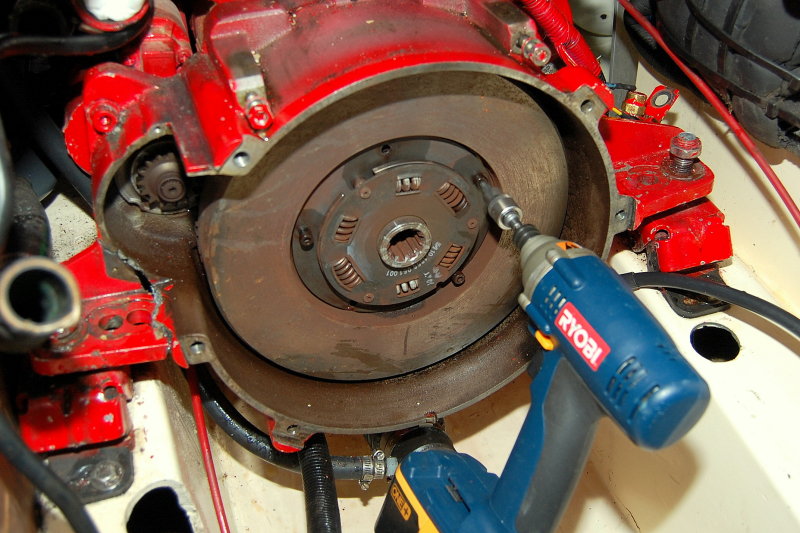
Remove Flywheel Nuts (use impact wrench!)
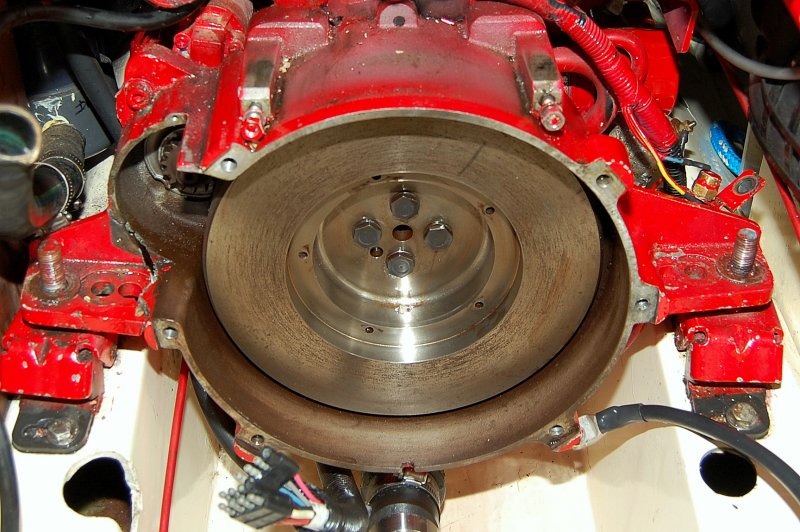
R&R Rear Main Seal:
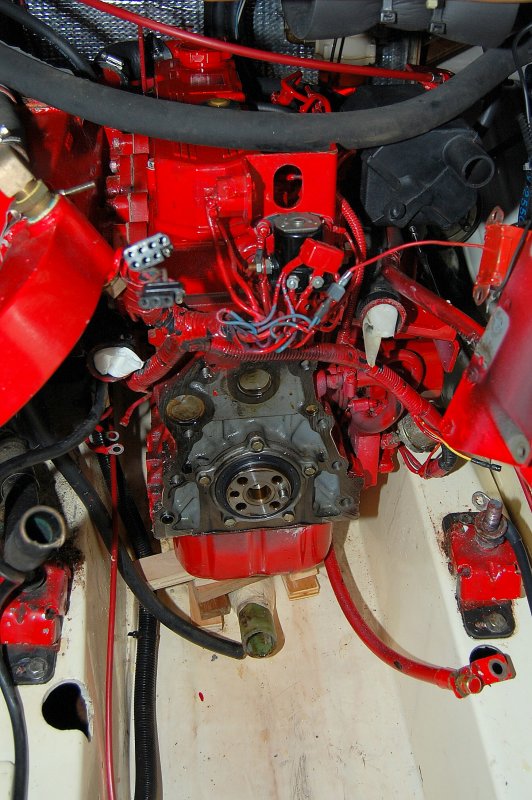
Might as well rebuild stuff and repaint while you have it apart:
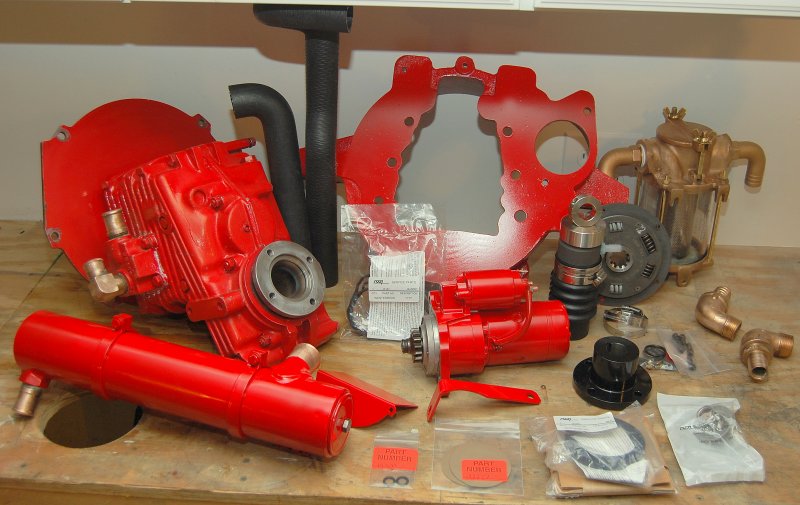
[/img]
Posted: Wed Feb 11, 2009 12:15 am
by George ( C&C 40 )
Thanks for the notes guys and thank you "Main Sail" for the details and the pictures!
I have the "Engine" book for the 3qm30(H) and the parts diagrams look very similar to the pictures you posted.
As far as the tranny removal is concerned -- My plan was to lift the engine into the main cabin by doing a series of block and tackle lifts utilizing moving overhead supports. That should give me lots of room to work with. Although please let me know if you think there is some reason that will not work.
I don't own an impact wrench. Is it a necessity? ( I don't mind buying tools but my workshop is already filled with a bunch of one-time tools from various past projects )
Are there any special compression tools for installing the seal? Special tools for removing the seal? I own a couple different harmonic pullers already but could always use another one :-)
Let me know how it works out for you or if you think there is anything else I should know.
George Jones
C&C 40 "Delphinus"
Wavelength 24 "Poco Loco"
Posted: Wed Feb 11, 2009 12:39 am
by George ( C&C 40 )
Hi again Main Sail,
I thought of one other thing. Is there any special trick or technique to separating the bell housing / transmission from the engine block ?
George
Posted: Sun Feb 15, 2009 8:47 pm
by Popeye1865
i don't believe it was mentioned but inspect the shaft carefully where the seal rides many times the seal over the years will wear a groove in the shaft and no amount of new seals will help. there are options such as speedy sleeves and i'm sure there are others like it. not a bad job if you have time you should torque your flywheel back on to spec. everything for that matter but at least the flywheel and damper. good luck.
Posted: Mon Feb 16, 2009 9:50 am
by George ( C&C 40 )
Thanks for the note Popeye1865,
I do have a torque wrench and I do have all the torque figures in the engine manual. I will make sure to get all the torques correct.
I was hoping that someone might give me some info on separating the bell housing / tranny from the main body of the engine. My hope is that the complete bell housing and tranny just slide off the spline of the input shaft as one complete unit and that I won't have to touch anything on the tranny at all. If that is true then pulling the damper plate, flywheel, etc. shouldn't be much of a problem. My guess is that this is how it will work but I would love to hear from somebody that has done it.
Thanks in advance,
George Jones
C&C 40 "Delphinus"
Posted: Mon Feb 16, 2009 6:28 pm
by Popeye1865
i have not pulled apart your specific engine but have had the joy of pulling apart many others. From your pics it looks like your bell-housing and trans come off together as your trans is bolted from the front thru the bell-housing. nothing to mess with there just splines like the above pics of the westerbeke. next the damper and then the flywheel. if you can build runners fwd of your engine bed you might just be able to slide the engine out on it's mounts on those. i highly recommend one of those small impact drivers not so much for this job but they just come in very handy for many jobs i believe dewalt had an 18v drill and impact for under 200 that is what i have and it has become one of my favorite tools.
Posted: Mon Feb 16, 2009 8:50 pm
by George ( C&C 40 )
Thanks again for the notes Popeye1865,
That all sounds very good. I was thinking about just undoing the single top bolt that holds the foot of the engine to the rubber mount and lifting the motor straight up off the threads. Are you saying that the best way to go is to undo the two bolts that secure each of the the rubberized motor mounts to the engine bed and just slide everything forward with the motor mounts attached? ( sounds good to me but I want to be sure -- I'm trying to make the re-alignment of the engine to the prop shaft as easy as possible once I'm finished with the whole thing. )
Thanks again for all your help,
George Jones
C&C 40 "Delphinus"
Posted: Mon Feb 16, 2009 11:16 pm
by Popeye1865
as long as the alignment was not fubared from the get go you should be good. no matter what i do the engine never goes back the same and i'm always adjusting alignment. pick you poison depending on the installation one way may be easier than another. either way use good protection on all of the surfaces you like 20min of protecting your boat will save you days worth of varnish repairs. have fun
Posted: Mon Feb 16, 2009 11:19 pm
by Popeye1865
while your at it check your pss for wear looks like it has been slinging water around you can flip the ss collar around for a new face and if the graphite is not too bad i sometimes use soft scrub to lap the faces together then rinse.
Posted: Tue Feb 17, 2009 12:28 am
by George ( C&C 40 )
Thanks Popeye1865. I appreciate the advice. I'll give your rail system a shot for moving the engine. I'll also pick up an impact wrench. Thanks again!
George
Posted: Sat Mar 21, 2009 2:13 pm
by George ( C&C 40 )
Hi All,
Quick update... Engine is in the main galley of the boat and is disassembled. Oil was, in fact, coming out of the rear engine oil seal - so the theory was correct. Just waiting on parts at the moment.
Since I had the engine on a hoist, I cleaned everything, replaced all the zincs, pulled and cleaned the heat exchanger, and replaced the filters and belts. I'm also replacing the lower engine oil seal ( oil pan seal ). She should be good for another 20 years when I'm done.
George Jones
C&C 40 "Delphinus"






 [/img]
[/img]